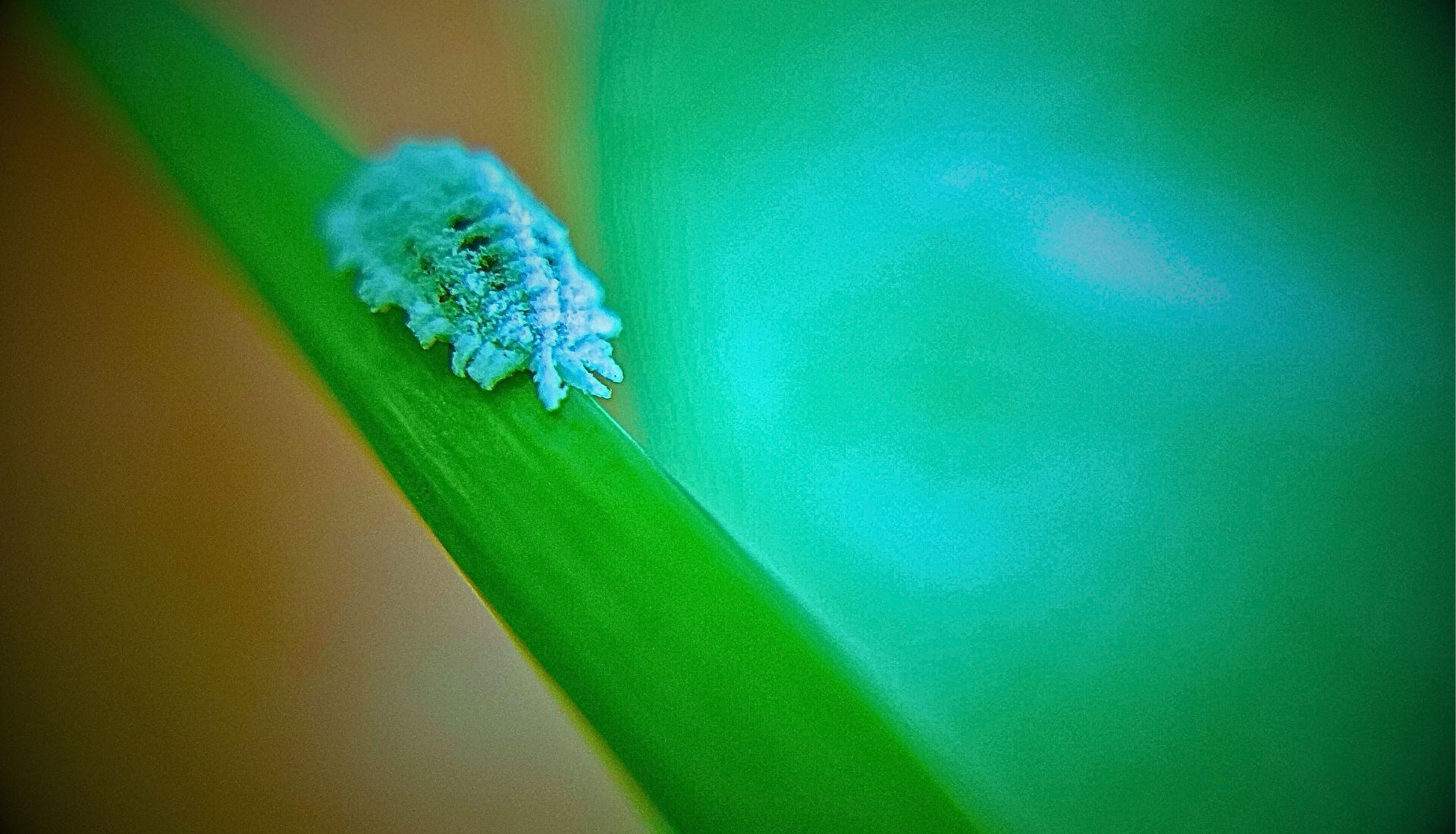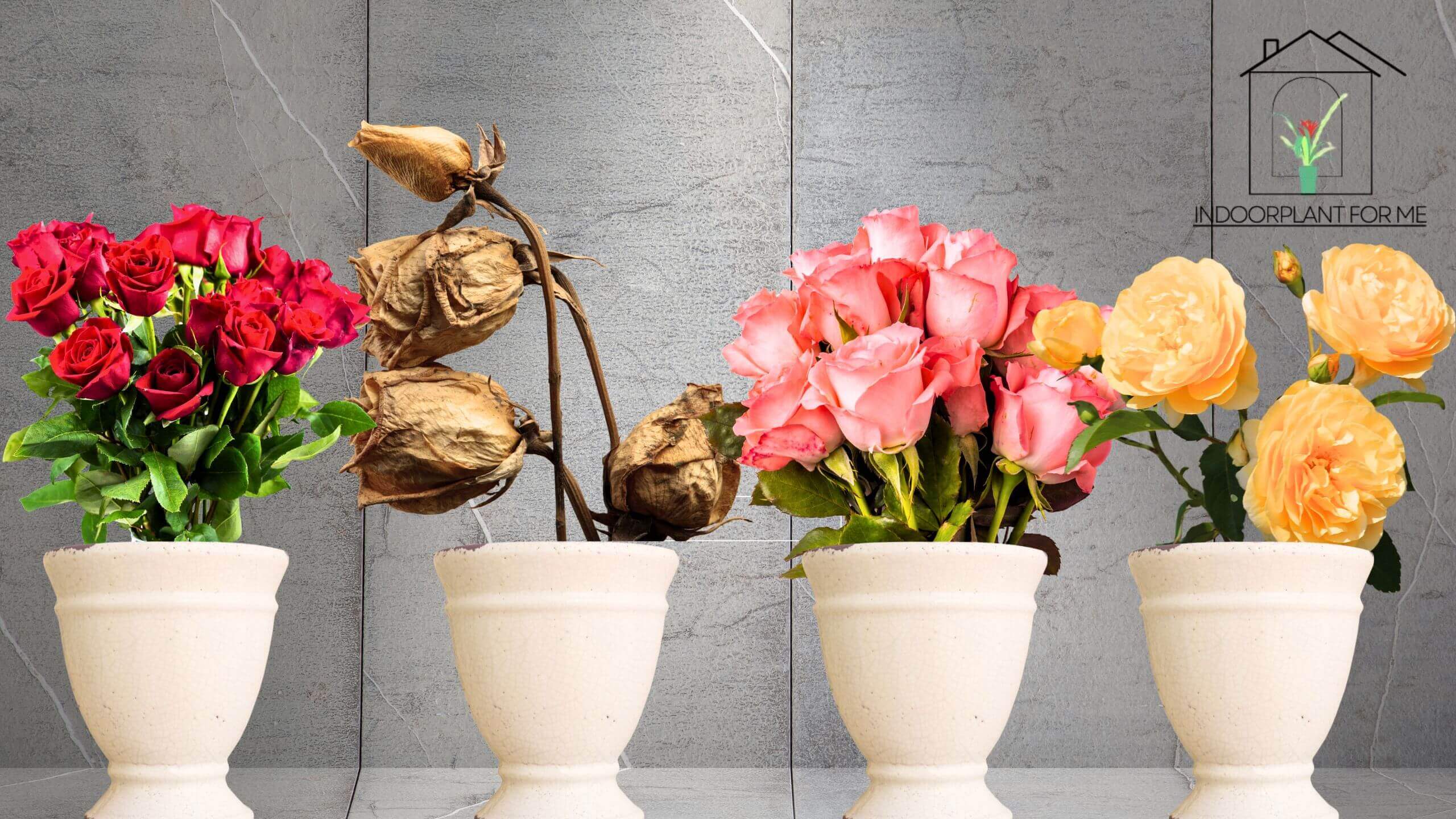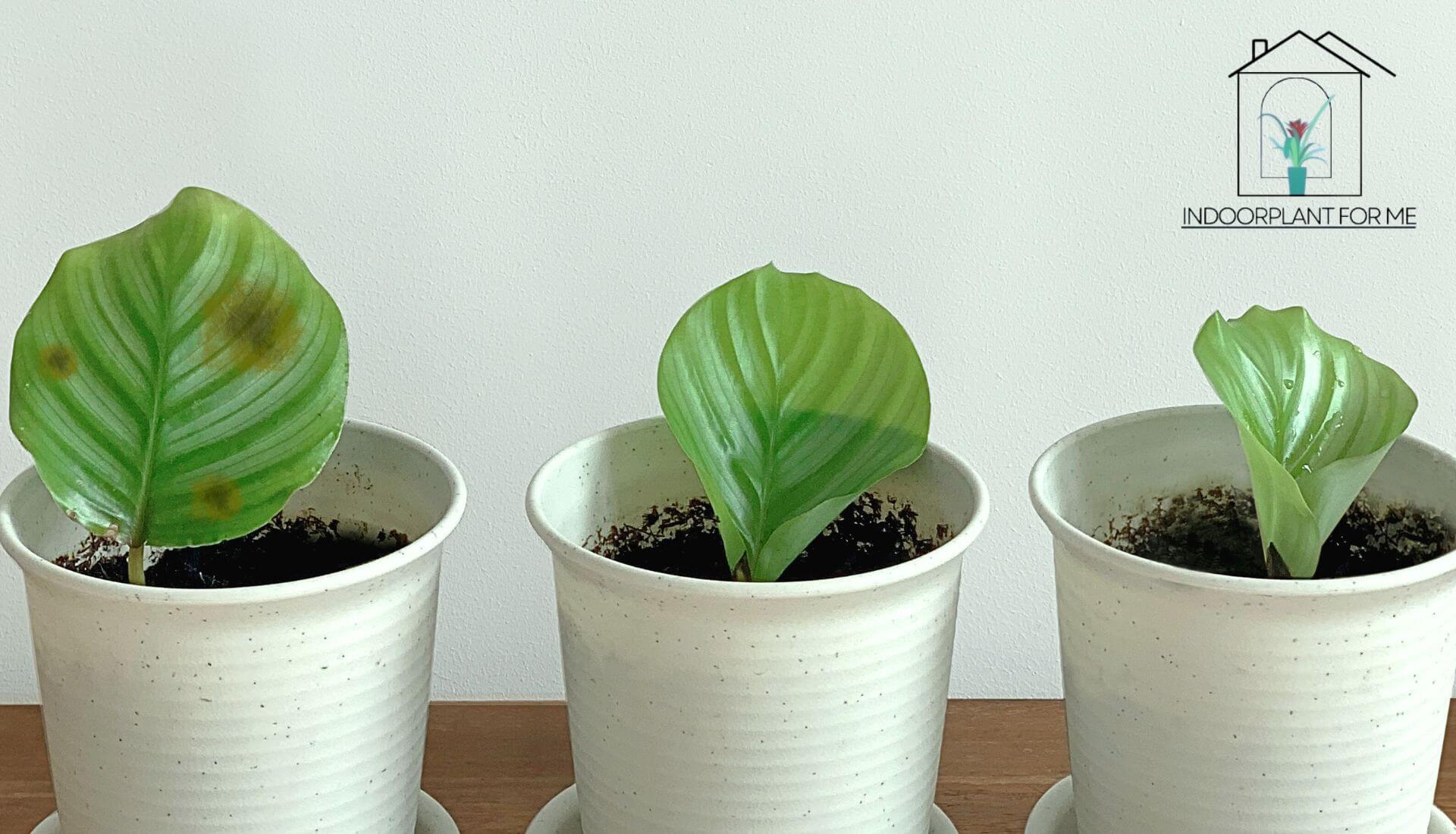Do you wish to know how indoor plants get Mealybugs? Yes, indoor plants get mealybugs for a list of reasons among which are Contaminated Soil or Potting Mix, Outdoor Exposure, New Plant Acquisitions, and so on….
As a passionate indoor gardener, few things are more disheartening than discovering your prized houseplants have fallen victim to an infestation.
These tiny, cotton-like creatures can wreak havoc on the health and appearance of your indoor oasis, leaving you scrambling for solutions. But fear not, oh ye plant enthusiasts!
This comprehensive guide will unveil the mystery of how indoor plants get mealybugs [pest] and provide you with the knowledge and strategies to nip these pests in the bud.
- What Are Mealybugs?
- Signs of Mealybug Infestation on Indoor Plants
- Causes of Mealybug Infestations
- Understanding Mealybug Life Cycle and Behavior
- Environmental Factors Contributing to Mealybug Infestations
- Preventing Mealybug Infestations on Indoor Plants
- Identifying Mealybugs: What Do They Look Like?
- Impact of Mealybugs on Indoor Plant Health
- Managing Mealybug Infestations in Indoor Environments
- FAQs
- Conclusion
What Are Mealybugs?
Before we dive into the nitty-gritty of how mealybugs find their way onto your houseplants, let’s first understand what we’re dealing with.
Mealybugs [insects] are soft-bodied, wingless insects that belong to the Pseudococcidae family.
These tiny creatures derive their name from the white, waxy, or cottony substance they secrete, giving them a distinctive, almost fluffy appearance.
| Life Stage | Appearance |
| Eggs | Tiny, yellow, or orange eggs laid in cottony egg sacs |
| Nymphs | Resemble adults but smaller and lack wings |
| Adults | Oval-shaped, segmented bodies, often with waxy filaments |
Mealybugs feed by inserting their long, slender mouthparts into the plant’s foliage, stems, and roots, essentially siphoning the vital nutrients and fluids from the plant.
As they feed, they excrete a sticky, sugary substance known as honeydew, which can lead to the growth of sooty mold [sooty mold] on the plant’s surfaces.
Signs of Mealybug Infestation on Indoor Plants
One of the telltale signs of a mealybug infestation is the presence of white, cottony masses [white cottony masses] on your indoor plants.
These masses are usually found in the nooks and crannies of the plant, such as where the leaves meet the stem or near the growth points [growth points].
Additionally, you may notice a sticky residue [sticky residue] on the leaves and surrounding surfaces, which is the honeydew secreted by the mealybugs.
Some common indoor plants that are particularly susceptible to mealybug infestations include:
- African violets
- African violets
- Orchids
- Jade plants
- Cacti and succulents
- Citrus plants
Early detection is crucial when it comes to mealybug infestations.
These pests can multiply rapidly, and a small infestation can quickly spiral out of control, putting the health of your entire indoor plant collection at risk.
Causes of Mealybug Infestations
So, how do these pesky critters find their way onto your beloved houseplants in the first place?
There are several potential causes of mealybug infestations in indoor environments:
1. Contaminated Soil or Potting Mix: Mealybugs can hitch a ride on contaminated soil or potting mixes, making their way into your home and onto your plants.
2. New Plant Acquisitions: When you introduce new plants to your indoor collection, there’s always a risk of bringing in unwanted pests, including mealybugs.
3. Outdoor Exposure: If you’ve had your indoor plants outside for a period, they may have picked up mealybugs from the outdoor environment.
4. Household Pests: Mealybugs can be introduced to your indoor plants through other household pests, such as ants, which may carry them or their eggs.
Understanding the potential sources of mealybug introduction can help you implement preventative measures and reduce the risk of infestations.
Understanding Mealybug Life Cycle and Behavior
To effectively combat mealybugs, it’s essential to understand their life cycle and behavior.
Mealybugs undergo several developmental stages:
1. Eggs: Eggs are laid in cottony egg sacs, often hidden in crevices or on the underside of leaves.
2. Nymphs: After hatching, the nymphs go through several molting stages before reaching adulthood.
3. Adults: Adult mealybugs are mobile and can reproduce, perpetuating the infestation cycle.
Mealybugs are sedentary pests, meaning they don’t move much once they’ve established a feeding site.
However, they can crawl to new areas of the plant or even to nearby plants, spreading the infestation.
Knowing their life cycle and behavior can help you time your treatment options [treatment options] and management strategies [management] more effectively.
Environmental Factors Contributing to Mealybug Infestations
Certain environmental conditions can create a cozy haven for mealybugs, allowing them to thrive and multiply rapidly.
Some key factors that contribute to mealybug infestations in indoor environments include:
– Warm Temperatures: Mealybugs prefer temperatures between 70°F and 90°F (21°C and 32°C), making indoor spaces ideal for their growth and reproduction.
– High Humidity: These pests thrive in humid conditions, as they are prone to desiccation in dry environments.
– Poor Air Circulation: Stagnant air and lack of air movement can create pockets of high humidity, which mealybugs love.
– Overcrowded Plants: Tightly packed plants with minimal spacing can create a perfect breeding ground for mealybugs, as they can easily move from one plant to another.
By understanding and adjusting these environmental factors, you can create less hospitable conditions for mealybugs, making it more difficult for them to establish a foothold in your indoor plant collection.
Preventing Mealybug Infestations on Indoor Plants
As the old saying goes;
“An ounce of prevention is worth a pound of cure”
Benjamin Franklin
This couldn’t be more true when it comes to mealybug infestations on indoor plants.
Here are some proactive measures you can take to prevent these pests from taking up residence in your indoor garden:
1. Quarantine New Plants: Before introducing any new plants to your collection, quarantine them for at least two weeks to ensure they are pest-free.
2. Inspect Plants Regularly: Make it a habit to inspect your plants regularly, checking the undersides of leaves, stems, and soil for any signs of mealybugs or other pests.
3. Practice Good Plant Hygiene: Keep your indoor garden clean by removing dead or dying leaves, debris, and any visible pests. Wipe down plant surfaces with a damp cloth to remove any honeydew or sooty mold.
4. Maintain Proper Plant Care: Healthy plants are less susceptible to pest infestations. Ensure your indoor plants receive adequate light, water, and nutrients to maintain their vigor.
5. Use Clean Soil and Containers: Always use fresh, sterile potting soil and thoroughly clean any reused containers to prevent the introduction of pests or pathogens.
6. Isolate Infested Plants: If you do spot an infestation, immediately isolate the affected plants to prevent the spread to other plants in your collection.
By implementing these preventative measures, you can significantly reduce the likelihood of mealybug infestations and keep your indoor plant oasis thriving.
Identifying Mealybugs: What Do They Look Like?
To effectively combat mealybugs, you need to be able to identify them accurately. Here’s what to look for:
| Life Stage | Appearance |
| Eggs | Small, yellow, or orange eggs encased in cottony egg sacs |
| Nymphs | Resemble adults but smaller, ranging from 1/16 to 1/8 inch long |
| Adults | Oval-shaped, segmented bodies covered in a white, waxy coating; females can reach up to 1/4 inch long |
Adult mealybugs often have short, waxy filaments extending from their bodies, giving them a fuzzy or cottony appearance.
They can be found clustered in groups on plant stems, leaves, and root systems, feeding on the plant’s sap.
It’s important to distinguish mealybugs from other common indoor plant pests, such as:
– Aphids: While aphids can also produce a sticky honeydew, they are typically smaller and more mobile than mealybugs.
Aphids come in a variety of colors, including green, yellow, and black, and lack the distinctive cottony appearance of mealybugs.
– Scales: Scale insects can resemble mealybugs in their waxy or cottony coverings, but they are typically immobile and firmly attached to the plant. Scales also have a more rounded, flattened shape compared to the oval, segmented bodies of mealybugs.
– Spider Mites: These tiny pests can create webbing on plants, but they lack the distinctive cottony or waxy appearance of mealybugs.
Spider mites are extremely small and often require a magnifying glass to spot.
– Fungus Gnats: While fungus gnats can be a nuisance in indoor gardens, they are small, flying insects that primarily affect the soil and potting mix, rather than the plant itself.
Accurately identifying the pest you’re dealing with is crucial for selecting the appropriate treatment and management strategies.
Impact of Mealybugs on Indoor Plant Health
While mealybugs may seem harmless at first glance, their impact on indoor plant health can be significant if left unchecked. Here are some of the ways mealybugs can damage your houseplants:
– Stunted Growth: By siphoning vital nutrients and fluids from the plant, mealybugs can stunt the plant’s growth, leaving it looking stunted and unhealthy.
– Wilting and Leaf Drop: As mealybugs continue to feed, they can cause the plant’s foliage to wilt and eventually drop off, leading to a sparse and unappealing appearance.
– Sooty Mold: The sticky honeydew secreted by mealybugs can encourage the growth of sooty mold, a dark fungus that can cover the plant’s leaves and inhibit photosynthesis.
– Weakened Plant Defenses: The stress caused by mealybug infestations can weaken the plant’s natural defenses, making it more susceptible to secondary infections or diseases.
Prompt action is crucial when dealing with mealybug infestations to prevent long-term damage and ensure the continued health and vitality of your indoor plants.
Managing Mealybug Infestations in Indoor Environments
If you’ve identified a mealybug infestation on your indoor plants, don’t panic! There are several effective methods for controlling and managing these pests.
The approach you choose will depend on the severity of the infestation and your personal preferences.
Cultural Controls
For minor infestations or as a preventative measure, consider implementing these cultural control methods:
– Pruning: Remove heavily infested plant parts or stems, being careful not to spread the mealybugs to other areas of the plant.
– Plant Sanitation: Regularly wipe down plant surfaces with a damp cloth or use a soft-bristled brush to dislodge mealybugs and their egg sacs.
– Isolate Infested Plants: Separate infested plants from your healthy plants to prevent the spread of mealybugs.
Natural and Organic Treatments
For those looking for eco-friendly options, consider these natural and organic treatments:
– Insecticidal Soaps: These plant-based soaps can effectively control mealybug populations by suffocating and desiccating the insects.
– Neem Oil: Derived from the neem tree, neem oil is a popular organic insecticide that can disrupt the life cycle of mealybugs.
– Horticultural Oils: These lightweight oils can smother and kill mealybugs on contact while leaving minimal residue on plants.
Chemical Treatments
In cases of severe mealybug infestations, chemical treatments may be necessary.
However, exercise caution and follow all product instructions carefully:
– Systemic Insecticides: These insecticides are absorbed by the plant and distributed throughout its tissues, making the plant itself toxic to mealybugs and other pests.
– Contact Insecticides: These products directly kill mealybugs on contact but may need to be reapplied periodically.
It’s important to note that while chemical treatments can be effective, they can also be harmful to beneficial insects and should be used with caution, especially around children and pets.
Other Management Strategies
In addition to the methods listed above, there are several other strategies you can employ to manage mealybug infestations:
– Soil Drench: Applying a soil drench of insecticidal soap, neem oil, or other appropriate products can help control mealybugs that may be present in the soil or potting mix.
– Companion Planting: Certain plants, such as marigolds, can help deter mealybugs and other pests through their natural chemical compounds.
– Quarantine and Disposal: If an infestation is too severe to manage, you may need to quarantine and dispose of heavily infested plants to prevent the spread to your other indoor plants.
Remember, managing mealybug infestations often requires a combination of approaches and persistence.
Be patient, and don’t get discouraged – with the right strategies, you can reclaim your indoor plant paradise.
FAQs
Absolutely! Preventing mealybug infestations is far easier than trying to get rid of them once they’ve taken hold. Here are some effective prevention strategies:
Quarantine new plants for a couple of weeks before introducing them to your indoor garden.
Inspect plants regularly, checking the undersides of leaves and in crevices for signs of mealybugs.
Keep your indoor plants healthy by providing proper lighting, watering, and fertilization.
Use sterilized potting soil and clean containers to avoid introducing pests.
Practice good housekeeping by removing dead leaves, debris, and any visible pests.
Root mealybugs, as their name suggests, infest the root systems of plants.
They can originate from several sources:
Contaminated potting soil or growing media
Infested plants brought into your home
Spreading from neighboring infested plants
These pests can be particularly persistent as they feed on the roots, making them harder to spot and treat.
How To Permanently Get Rid Of Mealybugs?
Getting rid of mealybugs permanently often requires a multi-pronged approach and patience. Here are some effective strategies:
- Prune off heavily infested plant parts and dispose of them properly.
- Use insecticidal soaps, neem oil, or horticultural oils to directly treat infested plants.
- Apply a systemic insecticide to the soil, which will be absorbed by the plant and make it toxic to mealybugs.
- Repot-infested plants in fresh, sterile potting mix to remove any remaining mealybugs or eggs.
- Quarantine and monitor treated plants for several weeks to ensure the infestation is eliminated.
What Is The Best Home Remedy For Mealybugs?
Several effective home remedies can help control mealybug infestations:
– Insecticidal soap sprays made from mild dish soap and water can suffocate and dislodge mealybugs.
– Neem oil, derived from the neem tree, is a natural insecticide that disrupts the life cycle of mealybugs.
– Rubbing alcohol or isopropyl alcohol can be used to spot-treat individual mealybugs or small infestations.
– A mixture of water and dish soap can be sprayed on plant foliage to dislodge and drown mealybugs.
What Are The Predators Of Mealybugs?
Mealybugs have several natural predators that can help keep their populations in check:
- Ladybugs and their larvae are voracious mealybug predators.
- Lacewings and their larvae feed on mealybugs and other soft-bodied insects.
- Certain species of parasitic wasps lay their eggs inside mealybugs, eventually killing them.
- Some species of mites, such as the mealybug destroyer (Chrysoperla carnea), prey on mealybugs.
Encouraging these beneficial insects in your indoor garden can help manage mealybug infestations naturally.
How Do You Spray Mealybugs Naturally?
There are several natural and organic options for spraying mealybugs:
- Insecticidal soap sprays made from mild dish soap and water can be applied directly to infested plants.
- Neem oil, a natural insecticide derived from the neem tree, can be mixed with water and sprayed on plants.
- Horticultural oils, such as those made from plant-based oils like soybean or cottonseed, can be used as a spray.
- A mixture of water and rubbing alcohol or isopropyl alcohol can be sprayed on mealybugs to dislodge and kill them.
– Insecticidal soap sprays made from mild dish soap and water can be applied directly to infested plants.
– Neem oil, a natural insecticide derived from the neem tree, can be mixed with water and sprayed on plants.
– Horticultural oils, such as those made from plant-based oils like soybean or cottonseed, can be used as a spray.
– A mixture of water and rubbing alcohol or isopropyl alcohol can be sprayed on mealybugs to dislodge and kill them.
What Product Kills Mealybugs?
Several commercial products are effective at killing mealybugs:
- Insecticidal soaps, such as those containing potassium salts of fatty acids, can suffocate and desiccate mealybugs.
- Horticultural oils, like neem oil or plant-based oils, can smother and disrupt the life cycle of mealybugs.
- Systemic insecticides, which are absorbed by the plant and make its tissues toxic to mealybugs, can provide long-lasting control.
- Contact insecticides, such as those containing pyrethrins or spinosad, can directly kill mealybugs on contact.
Always read and follow the product instructions carefully, and consider using natural or organic options whenever possible.
How Often To Spray Neem Oil For Mealybugs?
When using neem oil to control mealybug infestations, consistency is key. Here’s a general guideline:
- Spray neem oil every 7-10 days, thoroughly coating the plant foliage, stems, and soil surface.
- Continue spraying for at least 3-4 consecutive weeks to disrupt the mealybug life cycle.
- Monitor the plants closely and continue spraying as needed until the infestation is fully eliminated.
– Spray neem oil every 7-10 days, thoroughly coating the plant foliage, stems, and soil surface.
– Continue spraying for at least 3-4 consecutive weeks to disrupt the mealybug life cycle.
– Monitor the plants closely and continue spraying as needed until the infestation is fully eliminated.
– Reapply neem oil after heavy rains or watering, as it can be washed off the plant surfaces.
It’s important to follow the product instructions for proper dilution and application rates, as neem oil can be phytotoxic (harmful to plants) if used at excessive concentrations.
Conclusion
Mealybugs may be tiny, but their impact on your indoor plants can be significant.
By understanding how these pests find their way onto your houseplants, you can take proactive measures to prevent infestations and maintain the health and beauty of your indoor garden.
Remember to inspect your plants regularly, practice good plant hygiene, and create an unfavorable environment for mealybugs.
If an infestation does occur, act quickly and employ a combination of cultural, natural, and chemical controls to manage the situation effectively.
With vigilance, persistence, and the right strategies, you can protect your indoor plant collection from the clutches of these pesky pests and enjoy a thriving, mealybug-free indoor oasis for years to come.
Happy gardening, fellow plant enthusiasts.




